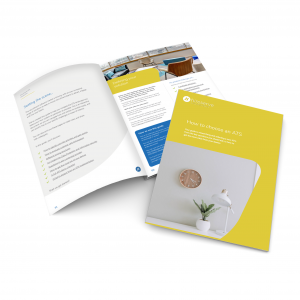How to save time (without spending much money)
Let’s set the scene. You’re part of small (or perhaps solo!) recruitment team in a busy organisation.
You don’t have an Applicant Tracking System in place, so are having to manually process every application that reaches you. Before we even reach that stage, you’re likely responsible for job approval and posting as well. And we wouldn’t be surprised if onboarding also falls into your remit.
In short, you’re busy. Busy with a lot of potential paperwork, manual processes and workarounds.
We’d love to tell you to select an ATS. You could automate your end-to-end hiring processes and save time and money. But we know that’s not always a viable option. So how else can you save time (and keep your costs low)?

Create your own application forms
If you use a platform like WordPress for your website, you should be able to install plugins to enable you to build your own application forms.
Often, these are simple enough for non-technical users to create forms themselves (I speak from experience!).
You should also be able to set up automatic notifications once someone submits one of your forms, and have the completed information land into your inbox for you to review.
This is a faster and simpler way for candidates to apply than the more traditional method, whereby a candidate downloads a Word application form, completes it, and then emails it back as an attachment.
You’ll save precious time, too. Instead of having to open individual attachments each time someone applies, or work through skewed formatting, you’ll have all the information you need delivered straight to your inbox, laid out in form fields. You can also mark certain questions as mandatory, meaning you won’t be chasing missing essential requirements.
If you’re not sure where to start, find out first what platform your website is built on (this could be WordPress, Wix, Drupal, etc.). From there, you should be able to browse and install free plugins, which enable you to build forms quickly and easily and which you can host on your careers pages.
If your site is a custom-build, ask your Marketing team or agency if they can advise.
What’s the alternative? If you have an ATS, you can create custom application forms for multiple different roles, areas and departments. You can add pre-screening questions, enable simple CV uploads or options like ‘Apply with LinkedIn’, and all information is safely stored within the system. A candidate record will be created automatically. And you’ll be able to review all application forms within the ATS, and comment and share with colleagues securely and efficiently.
You can reap significant cost-savings from reduced administration with an Applicant Tracking System. In fact, one of our clients, Royal Botanic Gardens, Kew, saved c. £16k per annum due to decreased recruitment admin!
Design an interview feedback template
This is particularly valuable if you’re interviewing as part of a panel and need to compare notes afterwards.
Whether using an interactive PDF form or a simple Word doc, create an interview template to save time and retain a consistent approach to assessment.
What’s the alternative? In an ATS, you would be able to record all interview feedback within the system. This ensures that all comments are secure and consistently formatted. It also means your interview panels can share feedback simply and quickly with one another, and all comments are stored against each candidate’s record.
Engage your hiring managers
So much time can be taken up by trying to connect with stakeholders, whether you’re comparing diaries for interview slots, or chasing interview feedback.
How can you make it a little easier for everyone? If you have capacity, run a training session for Hiring Managers, so they can understand more about the end-to-end recruitment journey and their role within it. Be clear on where their input is required and why it is so valuable.
You could also present the benefits in their own language. For example, a quicker time to recruit translates as less time having to spread their team to cover gaps, or relying on (and paying!) temps or contractors.
And make it simple for your Hiring Managers. Even something like a central recruitment email address or file sharing tool can make a difference. Managers could use it to easily access guidance notes on how to use certain templates, or what’s expected from them in terms of interview participation.
Well-engaged Hiring Managers and other stakeholders will help to reduce delays around job approval, shortlisting and interviewing, and offer and onboarding.
What’s the alternative? With an ATS, workflows and processes can automatically assigned to different users, including Hiring Managers. Reminders can be sent to complete tasks by a certain deadline. Hireserve ATS also has its own Hiring Manager portal, designed to be as simple and intuitive as possible. Managers can log in and out to quickly schedule interviews, review candidates and share their feedback.
Lincolnshire County Council, one of clients, used Hireserve ATS to introduce a Hiring Manager-led recruitment process. These changes have resulted in annual savings of c. £25k.
Use a calendar tool for interview administration
Interview administration can be a real drain on your time. One of our customers, StepChange Debt Charity, told us that their Recruitment Advisor made 137 calls in just one day, trying to arrange candidate interview dates!
Thankfully, there are a number of free calendar-booking tools available which could help you to reduce this kind of admin. Tools like YouCanBookMe enable team members to integrate their calendars and mark when they are available. Free time slots are then presented on your website for, in this case, candidates to select and book for an interview.
Allowing candidates to pick their own timeslots can significantly help to reduce your administration, rather than having to email, phone and leave voicemails for them. This can also be valuable when you’re trying to coordinate multiple diaries of an interview panel.
What’s the alternative? Some Applicant Tracking Systems provide a self-select interview tool. Candidates can receive an email or log in to a candidate portal to select or release interview slots. Panel members are notified of the interview time and date.
Based on the time-savings they achieved via the Hireserve self-select interview tool, StepChange are saving around £20k per annum!
So, from plugins to people…
…those are our practical suggestions for saving time on a budget. Recruitment administration is so time-consuming, and we know what a challenge it can be to keep on top of manual processes. Hopefully these ideas help alleviate some of those burdens.
The greatest time saver is, though, to automate your processes. A flexible and intuitive ATS can significantly reduce your admin and associated time and costs.
Lincolnshire County Council, for example, shaved 18 days from their average time to hire since implementing Hireserve ATS. Meanwhile, new client Wales & West Housing estimate they’re saving c. 1 hour per job at the job approval and publishing stage.
And an Applicant Tracking System may not cost as much as you first think. If you’re looking at the wider people picture, you could consider looking at a single HR and Payroll platform, such as our parent company XCD’s solution. This could allow you to start trying out recruitment software – or even integrate Hireserve to unlock the greater range of functionality and configurability available in a stand-alone ATS.
Are you going to start your ATS search? If so, we might have just what you’re looking for. Our ‘Choosing an ATS’ Guide is simple, straightforward and full of practical tips to support your selection process. It also includes a bonus interactive demo checklist – your perfect companion when you start exploring ATS demos. Get yours today!




